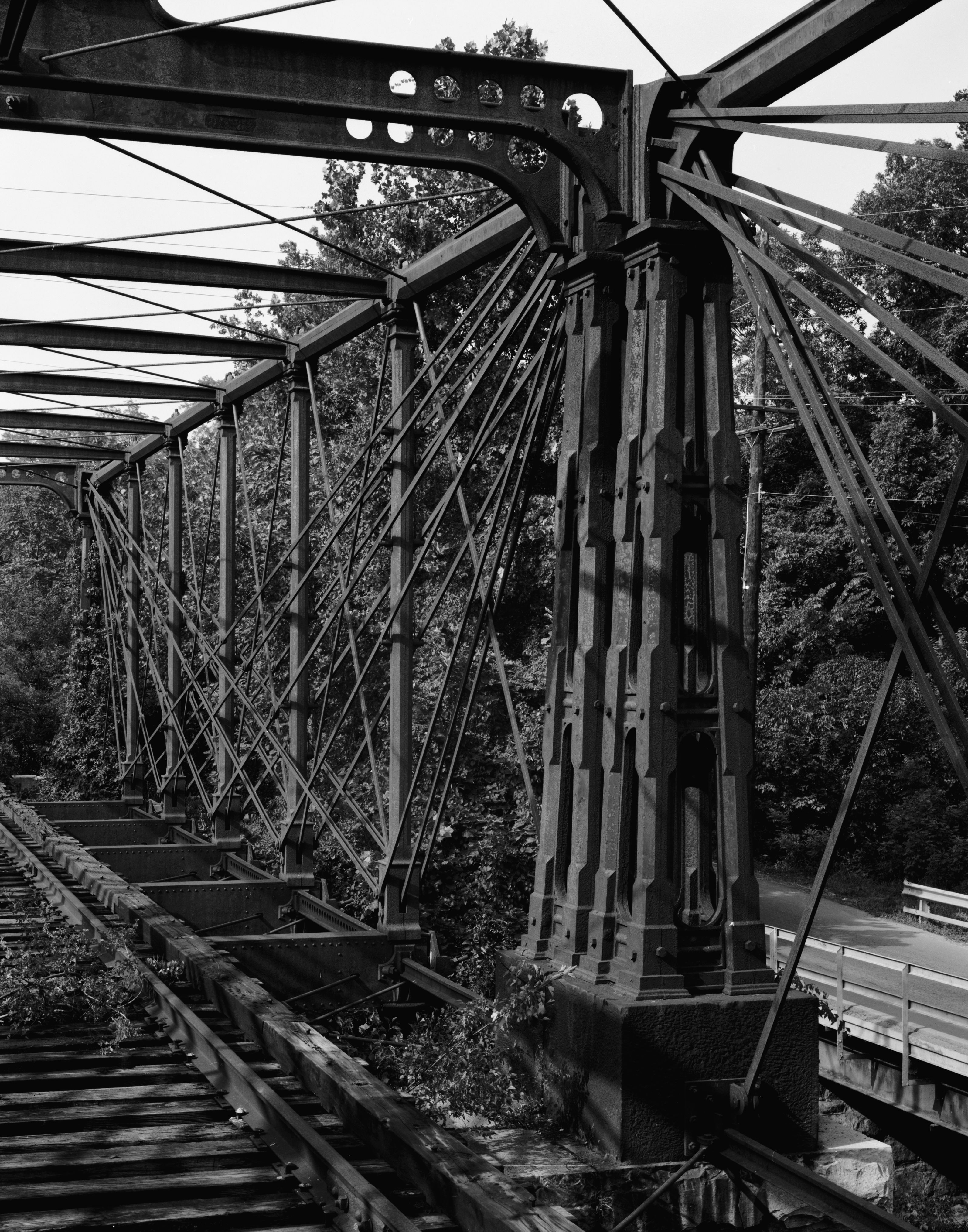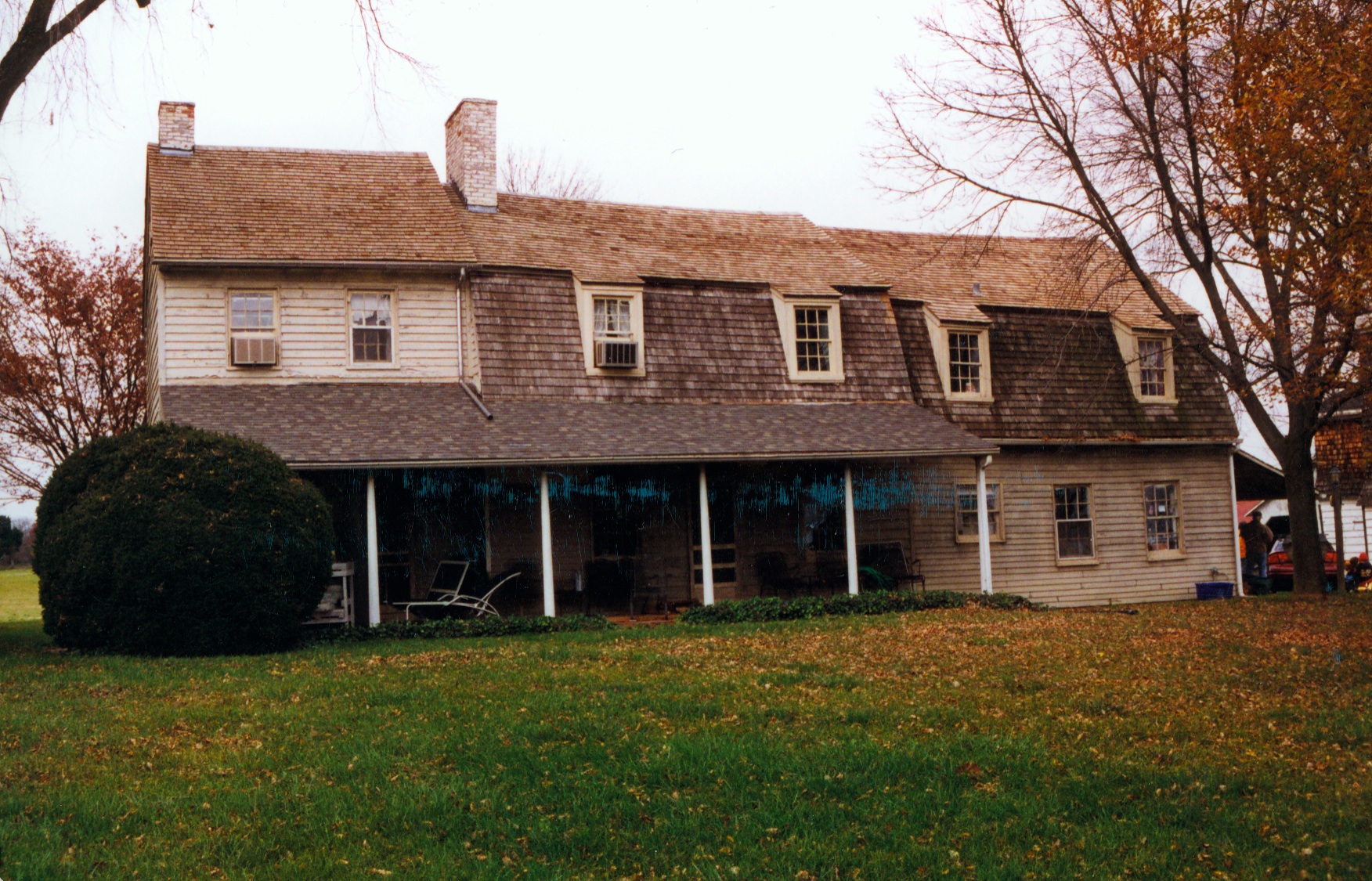|
Savage Mill Historic District
__NOTOC__ The Savage Mill Historic District is a national historic district located at Savage, Howard County, Maryland. The district comprises the industrial complex of Savage Mill and the village of workers' housing to the north of the complex. The site of Savage Mill on the rapids of the Little Patuxent River had been used for mill operations since the early 18th century. The district was part of a land grant named Ridgeley's Forest, surveyed in 1685 by Colonel Henry Ridgley. In 1750, Alexander Warfield built a mill along the river which was eclipsed by a larger construction chartered in 1812 by the Williams Brothers. By 1825, the mill employed 200 people including women and children, and 120 power looms for the production of cotton duck. The complex included several additions: a grist mill, an iron foundry, and a machine shop. The company was sold to William H. Baldwin, Jr. in 1847, who owned a Baltimore dry goods firm. In the early 20th century, the company became Baldwin, ... [...More Info...] [...Related Items...] OR: [Wikipedia] [Google] [Baidu] |
Savage, Maryland
Savage is an unincorporated community and census-designated place located in Howard County, Maryland, United States, approximately south of Baltimore and north of Washington, D.C. It is situated close to the city of Laurel and to the planned community of Columbia. As of the 2010 census it had a population of 7,054. The former mill town is a registered historic place, and has many original buildings preserved within and around the Savage Mill Historic District. History The lands of Savage were first settled ''circa'' 1650. Colonel Henry Ridgley surveyed the land around Savage Mill and nearby Annapolis Junction in 1685, naming the tract "Ridgely's Forrest". Joseph White was the grandson of Peregrine White, the first child born of the Mayflower expedition. In 1734, he opened a gristmill on land patented as "Whites Fortune" and "Mill Land". The parcels were consolidated to become "Whites Contrivance". A rich vein of American industrial history lies in Savage. When the textile ... [...More Info...] [...Related Items...] OR: [Wikipedia] [Google] [Baidu] |
World War II
World War II or the Second World War, often abbreviated as WWII or WW2, was a world war that lasted from 1939 to 1945. It involved the vast majority of the world's countries—including all of the great powers—forming two opposing military alliances: the Allies and the Axis powers. World War II was a total war that directly involved more than 100 million personnel from more than 30 countries. The major participants in the war threw their entire economic, industrial, and scientific capabilities behind the war effort, blurring the distinction between civilian and military resources. Aircraft played a major role in the conflict, enabling the strategic bombing of population centres and deploying the only two nuclear weapons ever used in war. World War II was by far the deadliest conflict in human history; it resulted in 70 to 85 million fatalities, mostly among civilians. Tens of millions died due to genocides (including the Holocaust), starvation, ma ... [...More Info...] [...Related Items...] OR: [Wikipedia] [Google] [Baidu] |
Historic Districts In Howard County, Maryland
History (derived ) is the systematic study and the documentation of the human activity. The time period of event before the invention of writing systems is considered prehistory. "History" is an umbrella term comprising past events as well as the memory, discovery, collection, organization, presentation, and interpretation of these events. Historians seek knowledge of the past using historical sources such as written documents, oral accounts, art and material artifacts, and ecological markers. History is not complete and still has debatable mysteries. History is also an academic discipline which uses narrative to describe, examine, question, and analyze past events, and investigate their patterns of cause and effect. Historians often debate which narrative best explains an event, as well as the significance of different causes and effects. Historians also debate the nature of history as an end in itself, as well as its usefulness to give perspective on the problems of the p ... [...More Info...] [...Related Items...] OR: [Wikipedia] [Google] [Baidu] |
Bollman Truss Railroad Bridge
The Bollman Truss Railroad Bridge across the Little Patuxent River at Savage, Maryland, is one of the oldest standing iron railroad bridges in the United States and the sole surviving example of a revolutionary design in the history of American bridge engineering. The double-span was built in 1852 at an unknown location on the main line of the Baltimore and Ohio Railroad. It was moved 35 years later to its present location, where it replaced the very first Bollman bridge. Today, it carries the Savage Mill Trail. The Bollman design, a suspension truss bridge, was the first successful all-metal bridge design to be adopted and consistently used on a railroad. The type was named for its inventor, Wendel Bollman, a self-educated Baltimore civil engineer. Bollman formed two companies in Baltimore, the W. Bollman and Company and the Patapsco Bridge Company, to market the bridge in North and South America. In 1966, the American Society of Civil Engineers designated the bridge as t ... [...More Info...] [...Related Items...] OR: [Wikipedia] [Google] [Baidu] |
Savage Mill Trail
The Savage Mill Trail is a rail trail that winds along the Little Patuxent River in Savage, Maryland. The trail was formerly part of the Baltimore and Ohio Railroad's rail corridor through central Maryland, but the Howard County, Maryland, Howard County Recreation and Parks Department acquired the land in 1978. Historical development Historical significance The Savage Mill Trail is located in an area that became a major manufacturing center in the early 1800s. Near the beginning of the trail is a textile mill that was built between 1816 and 1823. This mill along with other manufacturing companies in the area utilized the currents of the Little and Middle Patuxent Rivers to power their factories. At the beginning of the trail is a Bollman truss bridge, which was used by the Baltimore and Ohio Railroad during the middle of the 19th century. The Bollman truss bridge was invented in 1850 and was the first system to be made entirely of iron. This bridge was built in 1869 and ... [...More Info...] [...Related Items...] OR: [Wikipedia] [Google] [Baidu] |
Commodore Joshua Barney House
The Commodore Joshua Barney House is a historic home located at Savage, Maryland, Savage, Howard County, Maryland, Howard County, Maryland, United States. It was originally situated on a 700-acre tract in modern Savage Maryland named Harry's Lot, at a time when the closest town was Elkridge Landing, Elk Ridge. Both "Haary's Lot" and "Huntington Quarter" were inherited by Charles Greenberry Ridgely, sixth son of Colonel Henry Ridgley and Elizabeth Warfield Ridgley. After the death of Charles Greenberry Ridgely, Thomas Coale purchased portions of the land containing the structure. His daughter would become the famous Joshua Barney, Commodore Joshua Barney's second wife, bringing the figure from business in Baltimore. In 1809, Nathaniel F. Williams (1782-1864) married Caroline Barney, daughter of Joshua Barney, who in turn expanded an existing mill site on the property to create the Savage Mill. It has three sections: the original -story brick house built by Charles Greenberry Ridgle ... [...More Info...] [...Related Items...] OR: [Wikipedia] [Google] [Baidu] |
List Of Howard County Properties In The Maryland Historical Trust
The Maryland Historical Trust serves as the central historic preservation office in Maryland. The properties listed reside within the boundaries of modern Howard County. Prior to 1851, sites would have been part of Anne Arundel County. Sites settled prior to 1650 would have been part of St Mary's County in the Province of Maryland which was settled in 1632 by Europeans. Maryland Historical Trust properties in Howard County *HO-1, Cherry Grove, 2937 Jennings Chapel Road, Woodbine *HO-2, Oakdale, 16449 Edwin Warfield Road, Woodbine *HO-3, Pleasant Valley (Lost by Neglect), 13893 Forsythe Road, Cooksville *HO-4, Red House Tavern, Hoods Mill Road (MD 97), Cooksville *HO-5, Roberts Inn, 14610 Frederick Road (MD 144), Cooksville *HO-6, Ellerslie, 2761 Roxbury Mills Road (MD 97), Cooksville *HO-7, Union Chapel (St. Andrew's Episcopal Church), Roxbury Mills Road (MD 97), Glenwood *HO-8, Longwood (The Dependency), 3188 Roxbury Mills Road (MD 97), Glenwood *HO-9, Round About Hills ... [...More Info...] [...Related Items...] OR: [Wikipedia] [Google] [Baidu] |
National Register Of Historic Places
The National Register of Historic Places (NRHP) is the United States federal government's official list of districts, sites, buildings, structures and objects deemed worthy of preservation for their historical significance or "great artistic value". A property listed in the National Register, or located within a National Register Historic District, may qualify for tax incentives derived from the total value of expenses incurred in preserving the property. The passage of the National Historic Preservation Act (NHPA) in 1966 established the National Register and the process for adding properties to it. Of the more than one and a half million properties on the National Register, 95,000 are listed individually. The remainder are contributing resources within historic districts. For most of its history, the National Register has been administered by the National Park Service (NPS), an agency within the U.S. Department of the Interior. Its goals are to help property owners and inte ... [...More Info...] [...Related Items...] OR: [Wikipedia] [Google] [Baidu] |
Christmas Ornament
Christmas ornaments, baubles, "Christmas bulbs" or "Christmas bubbles" are decoration items, usually to decorate Christmas trees. These decorations may be woven, blown (glass or plastic), molded (ceramic or metal), carved from wood or expanded polystyrene, or made by other techniques. Ornaments are available in a variety of geometric shapes and image depictions. Ornaments are almost always reused year after year rather than purchased annually, and family collections often contain a combination of commercially produced ornaments and decorations created by family members. Such collections are often passed on and augmented from generation to generation. Festive figures and images are commonly preferred. Lucretia P. Hale's story "The Peterkins' Christmas-Tree" offers a short catalog of the sorts of ornaments used in the 1870s: The modern-day mold-blown colored glass Christmas ornament was invented in the small German town of Lauscha in the mid-16th century. History Invent ... [...More Info...] [...Related Items...] OR: [Wikipedia] [Google] [Baidu] |
Maryland State Police
The Maryland State Police (MSP), officially the Maryland Department of State Police (MDSP), is the official state police force of the U.S. state of Maryland. The Maryland State Police is headquartered at 1201 Reisterstown Road in the Pikesville CDP in unincorporated Baltimore County. Organizational structure The Maryland State Police is organized into a structure based on the United States military, composed of: *Department of State Police (commanded by the Colonel) *Bureaus (commanded by a Lieutenant Colonel) *Commands (commanded by a Major) *Troops (commanded by a Captain) *Divisions (commanded by a Captain or Civilian Director) *Barracks (commanded by a Lieutenant) *Sections (commanded by a Captain or Lieutenant or Civilian Director) *Units (commanded by a First Sergeant) The Maryland State Fire Marshal is a member of the department and is charged with investigation and prosecution of suspicious fires and arson throughout the state. All sworn members are organized into 1 o ... [...More Info...] [...Related Items...] OR: [Wikipedia] [Google] [Baidu] |
Historic District (United States)
Historic districts in the United States are designated historic districts recognizing a group of buildings, Property, properties, or sites by one of several entities on different levels as historically or architecturally significant. Buildings, structures, objects and sites within a historic district are normally divided into two categories, Contributing property, contributing and non-contributing. Districts vary greatly in size: some have hundreds of structures, while others have just a few. The U.S. federal government designates historic districts through the United States Department of the Interior, United States Department of Interior under the auspices of the National Park Service. Federally designated historic districts are listed on the National Register of Historic Places, but listing usually imposes no restrictions on what property owners may do with a designated property. U.S. state, State-level historic districts may follow similar criteria (no restrictions) or may req ... [...More Info...] [...Related Items...] OR: [Wikipedia] [Google] [Baidu] |
Baltimore, Maryland
Baltimore ( , locally: or ) is the most populous city in the U.S. state of Maryland, fourth most populous city in the Mid-Atlantic, and the 30th most populous city in the United States with a population of 585,708 in 2020. Baltimore was designated an independent city by the Constitution of Maryland in 1851, and today is the most populous independent city in the United States. As of 2021, the population of the Baltimore metropolitan area was estimated to be 2,838,327, making it the 20th largest metropolitan area in the country. Baltimore is located about north northeast of Washington, D.C., making it a principal city in the Washington–Baltimore combined statistical area (CSA), the third-largest CSA in the nation, with a 2021 estimated population of 9,946,526. Prior to European colonization, the Baltimore region was used as hunting grounds by the Susquehannock Native Americans, who were primarily settled further northwest than where the city was later built. Colonis ... [...More Info...] [...Related Items...] OR: [Wikipedia] [Google] [Baidu] |

.jpg)




.jpg)

